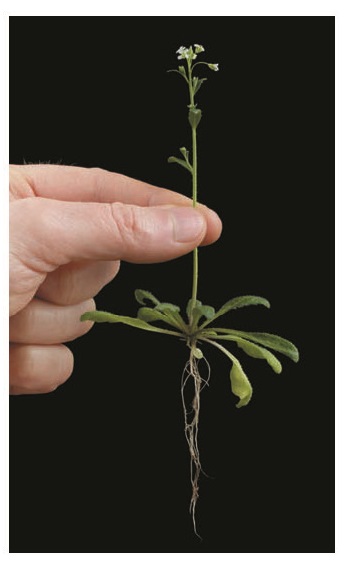ARABIDOPSIS THALIANA
The study of plant molecular biology and development is an active and expanding field of considerable economic importance as well as intellectual interest. Since the genomes of plants cover a range of complexity comparable to that of animal genomes (see Table 1.2), an optimal model for studies of plant development would be a relatively simple organism with some of the advantageous properties of C. elegans and Drosophila. The small flowering plant Arabidopsis thaliana (mouse-ear cress) (Figure 1.19) meets these criteria and is therefore widely used as a model to study the molecular biology of plants.
 |
Figure
1.19 Arabidopsis thaliana Arabidopsis is a model for studying the
molecular biology of
plants.
Arabidopsis is notable for its genome of only about 125 million base pairs. Although Arabidopsis contains a total of about 26,000 genes, many of these are repeated, so its number of unique genes is approximately 15,000—a complexity similar to that of C. elegans and Drosophila. In addition, Arabidopsis is relatively easy to grow in the laboratory, and methods for molecular genetic manipulations of this plant have been developed. These studies have led to the identification of genes involved in various aspects of plant development, such as the development of flowers. Analysis of these genes points to many similarities, but also to striking differences, between the mechanisms that control the development of plants and animals.




